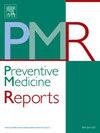Bullying-induced trauma symptomatology among adolescents in Bangladesh: The mediating role of attachment styles
IF 2.4
3区 医学
Q2 PUBLIC, ENVIRONMENTAL & OCCUPATIONAL HEALTH
引用次数: 0
Abstract
Objectives
This study aimed to explore how attachment styles mediated between bullying and trauma symptomatology in Bangladeshi Adolescents.
Method
This cross-sectional study was conducted in Bangladesh between July to September 2022. By convenient sampling, we collected data from adolescents (Ages 12 to 18, n = 615, 309 females and 306 males, Mean Age = 15.12, SD = 0.81). The participants completed the Bangla revised Olweus Bully/Victim Questionnaire (OBVQ-R), Attachment Styles Classification Questionnaire (ASCQ-B), and Children's Revised Impact of Events Scale-13 (CRIES-13). We used Partial Least Square Structural Equation Modeling (PLS-SEM) for data analysis.
Results
The reflective measurement model analysis assessed satisfactory factor loadings ranging from 0.628 to 0.967, with composite reliability (CR) values between 0.914 and 0.968, indicating acceptable internal consistency. Convergent validity was met for most constructs, except for the OBVQ-R, which likely reflects two distinct factors—Victimization and Perpetration. The predictive accuracy of the model was confirmed with Q2 values: 0.026 for bullying's effect on attachment style, 0.065 for bullying's impact on trauma, and 0.259 for attachment's effect on trauma. Additionally, bullying had significant indirect effects on trauma through attachment (β = 0.153, p < .001), showing substantial mediation. The overall model fit was satisfactory, with an SRMR value of 0.07.
Conclusion
The association between bullying and trauma is partly mediated by attachment styles, indicating that attachment-focused therapies could mitigate the trauma associated with bullying.
孟加拉青少年欺凌所致创伤症状:依恋类型的中介作用
目的探讨孟加拉青少年的依恋类型如何在欺凌和创伤症状之间起中介作用。方法横断面研究于2022年7月至9月在孟加拉国进行。采用方便抽样的方法,收集青少年数据(12 ~ 18岁,n = 615,女性309名,男性306名,平均年龄= 15.12,SD = 0.81)。参与者完成了孟加拉修订的Olweus欺凌/受害者问卷(OBVQ-R)、依恋类型分类问卷(ASCQ-B)和儿童修订的事件影响量表-13(哭-13)。我们使用偏最小二乘结构方程模型(PLS-SEM)进行数据分析。结果经反射测量模型分析,因子负荷满意范围为0.628 ~ 0.967,复合信度(CR)值为0.914 ~ 0.968,内部一致性良好。除了OBVQ-R外,大多数构念都符合收敛效度,OBVQ-R可能反映了两个不同的因素-受害和犯罪。以Q2值验证了模型的预测准确性:欺凌对依恋类型的影响为0.026,欺凌对创伤的影响为0.065,依恋对创伤的影响为0.259。此外,欺凌通过依恋对创伤有显著的间接影响(β = 0.153, p <;.001),显示有实质的调解作用。整体模型拟合令人满意,SRMR值为0.07。结论霸凌与创伤之间的关系在一定程度上受依恋类型的影响,表明依恋为中心的治疗可以减轻霸凌相关的创伤。
本文章由计算机程序翻译,如有差异,请以英文原文为准。
求助全文
约1分钟内获得全文
求助全文
来源期刊

Preventive Medicine Reports
Medicine-Public Health, Environmental and Occupational Health
CiteScore
3.90
自引率
0.00%
发文量
353
 求助内容:
求助内容: 应助结果提醒方式:
应助结果提醒方式:


